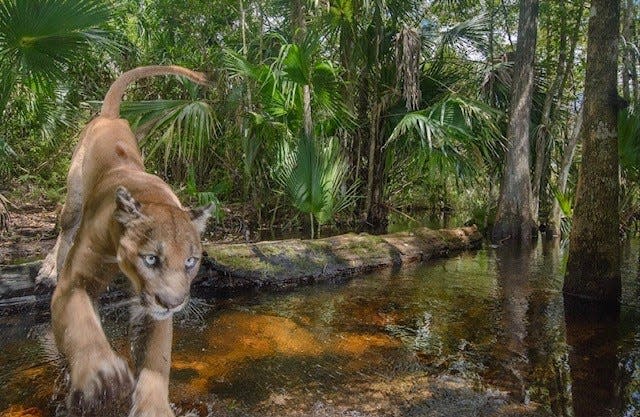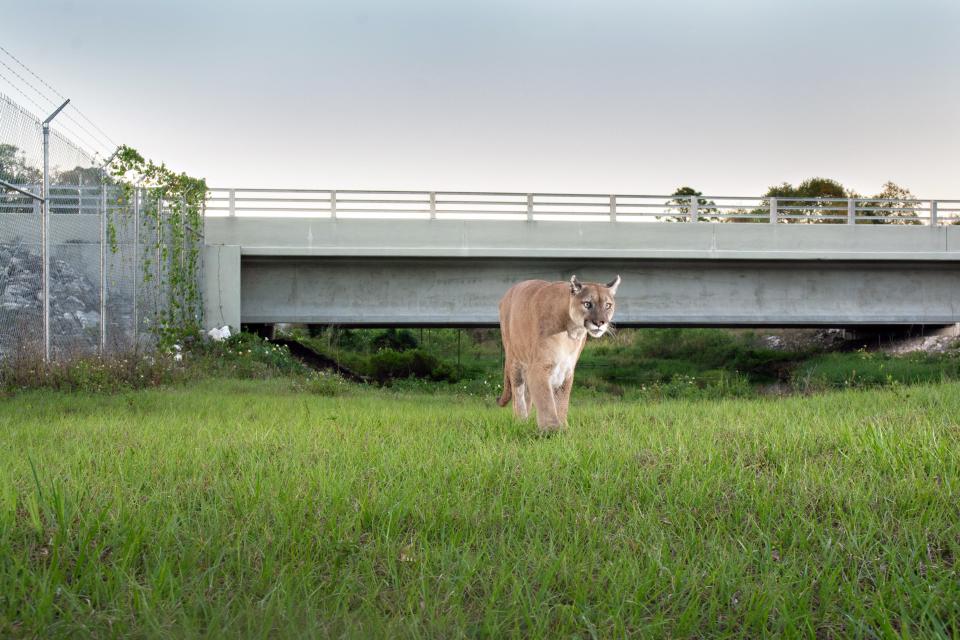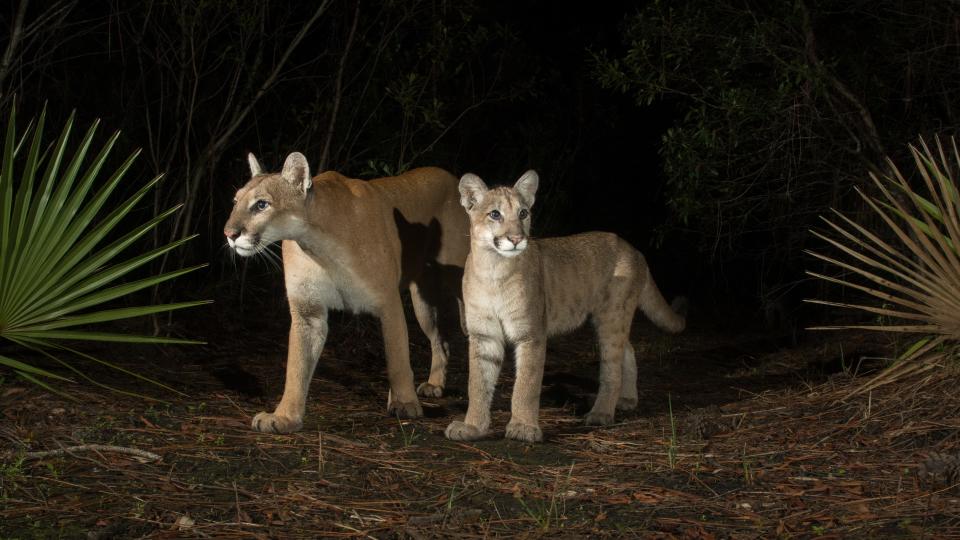Florida panther NatGeo film spotlights Southwest Florida: 5 things to know

The Florida panther soon will become a worldwide movie star.
"Path Of the Panther" is the latest National Geographic documentary to reach theaters this weekend and will stream on Disney+ this spring. Tickets are on sale for the movie that premieres Friday, Feb. 24, in 37 Florida theaters, from Naples to Jacksonville and Coconut Creek to Tallahassee.
Award-winning actor and activist Leonardo DiCaprio served as a film executive producer. Florida natives Carlton Ward Jr. — a National Geographic photographer — and Tori Linder of Wildpath, a co-producer of the documentary, recently discussed the film with the Naples Daily News.
Where was the documentary filmed in Florida?
"Path of the Panther" features Southwest Florida prominently, with about three-fourths of the documentary filmed in the region.
This included the Florida Panther National Wildlife Refuge in Collier County, along with the Fakahatchee Strand ecosystem in the refuge; Audubon Corkscrew Swamp Sanctuary, north of Naples and east of Bonita Springs; and Babcock Ranch State Preserve in Charlotte County.
Cinematic hot spot:From Denzel Washington to Joe Pesci: What movies were filmed in Southwest Florida?
"We take that for granted that we have 4 million acres of contiguous public land sitting just east of Naples that is the wildest place on the Eastern seaboard of the United States," Linder said.
What is the film about?
"The motivation, the purpose behind this film and the whole 'Path of the Panther' project is to inspire the protection of the Florida Wildlife Corridor," Ward said.
The Florida Wildlife Corridor consists of nearly 18 million acres of connected lands and waters supporting wildlife and people, helping to protect habitats of Florida’s endangered and threatened species. Ten million acres are protected with 8 million acres requiring some level of conservation.

The Florida panther, which reached near extinction in the 1950s, was among the first to be added in 1973 to the U.S. endangered species list. Today there are nearly 200 Florida panthers in the state.
"The Florida panther is the ultimate symbol of that story and is the ultimate beneficiary of whether we can indeed save the Florida Wildlife Corridor," he said.
"Path of the Panther" also addresses vehicle-panther deaths, with an average of about 30 killed mainly on Collier County roads.
“It just illustrates the tension between the seemingly endless demand for new development land and the need for land conservation," Ward said.
"It also is the foundation for one of the other themes in the film, which is the toll roads that were considered in 2019 and 2020 that would have potentially put a new toll road from Orlando to Naples into the heart of panther territory."
How long did it take to film and what was some of the challenges?
A focused effort to tell the Florida panther's story that began in 2016 evolved into a five-year-long documentary quest, Ward said.
"The wildlands of south Florida are the harshest landscapes on the planet, particularly in the wet season," Ward said.
"Where the panther has survived across the past century are the most remote and inhospitable landscapes really the Eastern United States has to offer. That's why they had these remote swamps as a last refuge."
Telling the animal's story meant being waist-deep in swamp water often, designing photo and video camera trap systems durable enough to survive the harsh southern Florida elements — including hurricanes.
Grizzly Creek Films also created visuals in the documentary.
"We had a team of world-class camera operators out there," Linder said. "All of which were incredibly brave and bold individuals to get out there day after day in the swamp. It's incredible to see how bonded our team is, as a result of years working in some of America's most wild places."
What did it mean to Florida natives Ward and Linder to make the documentary?
Ward grew up in Clearwater with extended family of cattle ranchers in the Wauchula area, while Linder is from Central Florida.
"For nearly all of us on this production team, this is a story of home where we're born and bred Floridians," Linder said. "And we felt a sense of responsibility to a degree to tell this story of the hidden wild in our own backyard and why it's so important."
Caught on film:Romping panther kitten, other Florida wildlife captured on video at Conservation Collier preserve
With so many who worked on the project from Florida, it gave "connection and purpose" to the film by showing the underappreciated part of the state, Ward said.
What do you hope viewers learn from the film after watching it?
“On a very basic level, I want it to make people proud to be Floridians and the land we share in this state," Ward said.

"The wild heart of our state is often overlooked and forgotten by so many of us on the coast. I want that sense of identity in these places and to translate into voices for protection. What we need now is a public movement to save wild Florida.”
Linder agreed, saying she sees the Florida panther as a canary in the coal mine.
"If the Florida panther can't survive here," she said, "I have legitimate concerns as to whether we can in the coming decades."
Dave Osborn is the regional features editor of the Naples Daily News and News-Press. Follow him on Instagram @lacrossewriter and on Twitter @NDN_dosborn.
This article originally appeared on Naples Daily News: Florida panther, Collier County star in NatGeo film: 5 things to know

